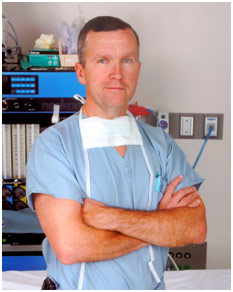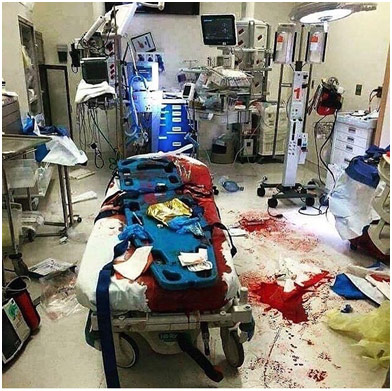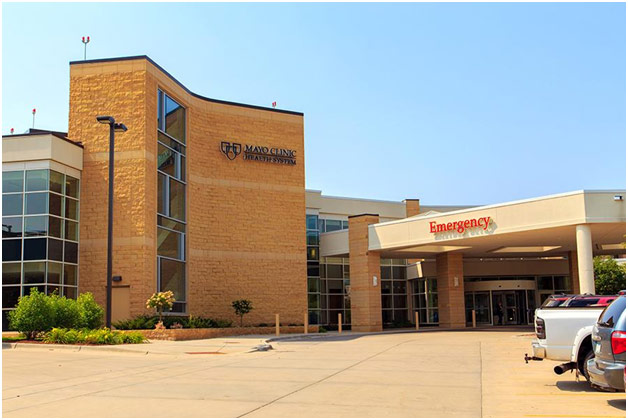Hot Lights, Cold Steel: Life, Death and Sleepless Nights in a Surgeon’s First Years is an autobiography of Dr. Michael Collins during his residency period at the Mayo Clinic in Rochester, Minnesota. Dr. Collins, an ex-cab driver, and ex-construction worker felt out of his place his first year as a junior orthopedic resident, surrounded by countless other doctors who were far more intelligent than he; however, Dr. Collins worked tirelessly, making his way up to become the chief resident in the end. This book is the compelling journey filled with blood, toil, and tears that he undertook to get where he is today.

Dr. Michael Collins
Dr. Collins’ greatest fear was that he would make a grave mistake when doing surgery. He was not greatly exposed to orthopedics in medical school because he had done only one orthopedic round compared to the countless orthopedic rounds that his fellow residents had done. He felt that he “was a counterfeit, an imposter who had infiltrated this society of brilliant surgeons” (Collins 7). Thus, Dr. Collins began to study his patients and review their charts meticulously in order to prepare himself to do the best job he could when he finally entered the “world of operating rooms and surgery, the world of ‘hot lights and cold steel’” (39). However, Dr. Collins soon realized the hard way that he could not win every battle. It is one of the most difficult and saddest parts of medicine when there is nothing the doctor can do to help the patient despite the doctor trying to do anything and everything. In one case, a young woman came to his care with severe head trauma and a steadily rising fever due to damage to the hypothalamus, which regulates body temperature. No matter what Dr. Collins tried, the fever kept rising and the woman eventually died. These kinds of “failures” made Dr. Collins extremely emotional and question what he was doing at times. Despite doing everything perfectly and exactly as the books instructed, the patient would die, and that devastated Dr. Collins because the best was not good enough. Nevertheless, the successes and the gratitude from the patients that he was able to heal did help in reducing that pain and reminded him of the nobility and importance of his profession.

World of “Hot Lights and Cold Steel”
As a junior resident, Dr. Collins would do bits and parts of various procedures but never the whole thing; however, when he became a senior resident, this all began to change. Under Dr. Satterfield’s service, he was to complete his first total hip replacement entirely on his own. Despite being extremely nervous before, he was able to do it smoothly, unconsciously falling back on all the knowledge and experience he had by doing parts of the procedure. His studying was paying off in a big way, and he soon realized that he had the potential to be appointed chief resident. He began to feel more natural and comfortable at performing various surgeries, racking up enormous experiences under various different doctors that would serve him extremely well in the future. While the Mayo Clinic provided him with top-notch training, the pay was extremely minimal at $2.50 an hour. Nevertheless, Dr. Collins remarked that “every one of [the residents] would have worked for nothing,” but Dr. Collins still would have liked more money because he was having trouble paying his bills (102). Thus, he began moonlighting at Mankato, a rural hospital ninety miles away from Rochester. Every weekend that he was not on call, he would go moonlight at Rochester if he could. Dr. Collins had to make enormous sacrifices in terms of family time as well as sleep to make ends meet, and that is what is so inspiring about him. Despite being broke and living from paycheck to paycheck, he never lost sight of his goal to help people, and he persevered despite all the challenges and anguish that he faced.

Mankato Hospital
The story of Hot Lights, Cold Steel is all about Dr. Collins’ choices. A woman with severe cancer hurts her hip; should he carry out prophylactic pinning, a painful operation to stop the bone from breaking, despite the fact that her prognosis is six months. Should he amputate a twelve-year-old boy’s mangled leg or risk the boy’s life trying to save it? Should he remove a patient’s entire leg and pelvis and blast her with painful radiation because she has osteogenic sarcoma of the ilium (a type of bone cancer) even though she had less than a five percent chance of surviving five years? All these choices come down to the surgeon who has to make the hard decision in difficult times. Sometimes, it’s the right decision, and other times it’s not. When it’s time to make that difficult decision, it becomes increasingly important for the surgeon to remember the Hippocratic Oath that the role of the doctor is to do no harm. The patient puts their trust in the surgeon, “not in the [nurse], not in the anesthesiologist, not in the institution” (36). Anything that happens in the operating room is the surgeon’s responsibility, and the surgeon has to do their very best for the patient. It’s the great responsibility associated with the great power of being able to heal patients of their diseases and disorders. The job of a doctor is not easy: it is extremely physically, mentally, and emotionally demanding; nonetheless, Dr. Collins proves in this memoir of his residency at the Mayo Clinic that the ability to change someone’s life for the better by healing them far outweighs the cost.
References
Academy of Surgeons. Operating Room. Instagram, instagram.com/p/BYEBzjMhQrI/?taken-by=academyofsurgeons. Accessed 25 Aug. 2017.
Collins, Michael J. Hot Lights, Cold Steel: Life, Death and Sleepless Nights in a Surgeon’s First Years. New York, St. Martin’s Press, 2006.
Dr. Michael Collins. Fenwick High School, friarsonline.com/page.aspx?pid=556. Accessed 25 Aug. 2017.
Hot Lights, Cold Steel: Life, Death, and Sleepless Nights in a Surgeon’s First Years. Book Depository, bookdepository.com/Hot-Lights-Cold-Steel-Michael-J-Collins/9781515918158. Accessed 25 Aug. 2017.
Mayo Clinic Health System – Eastridge. University of Minnesota, familymedicine.umn.edu/education-training/residency-programs/mankato/where-we-practice. Accessed 25 Aug. 2017.















